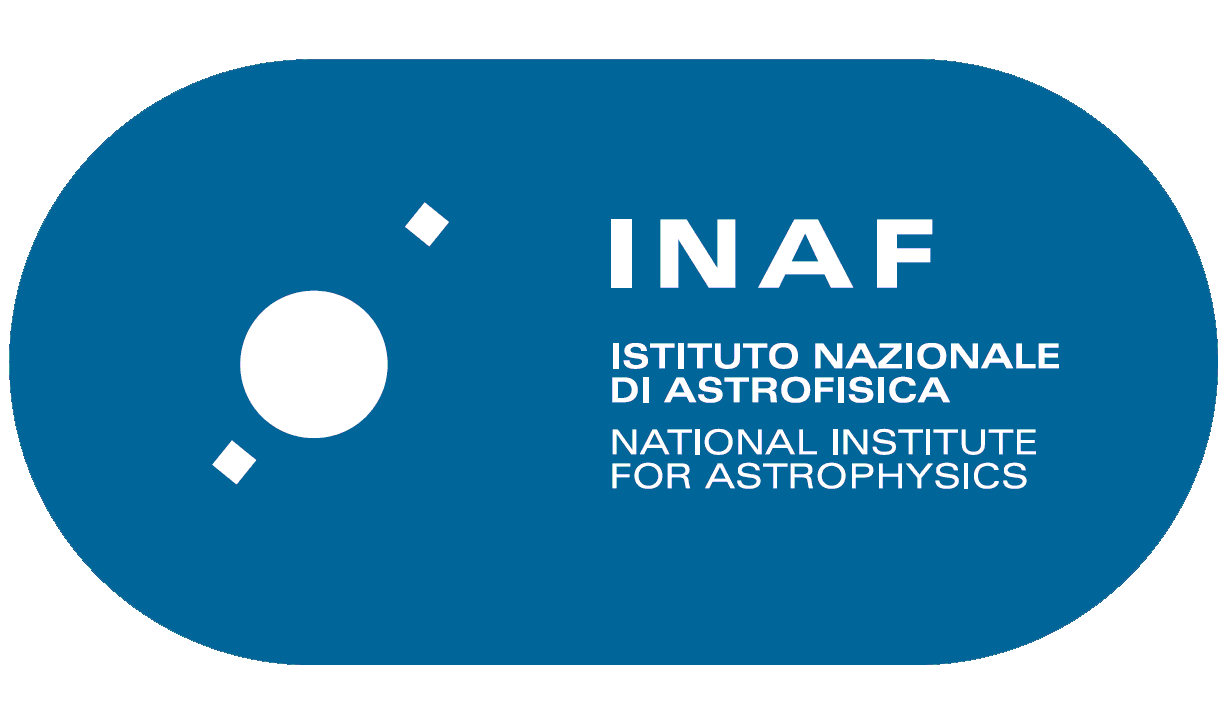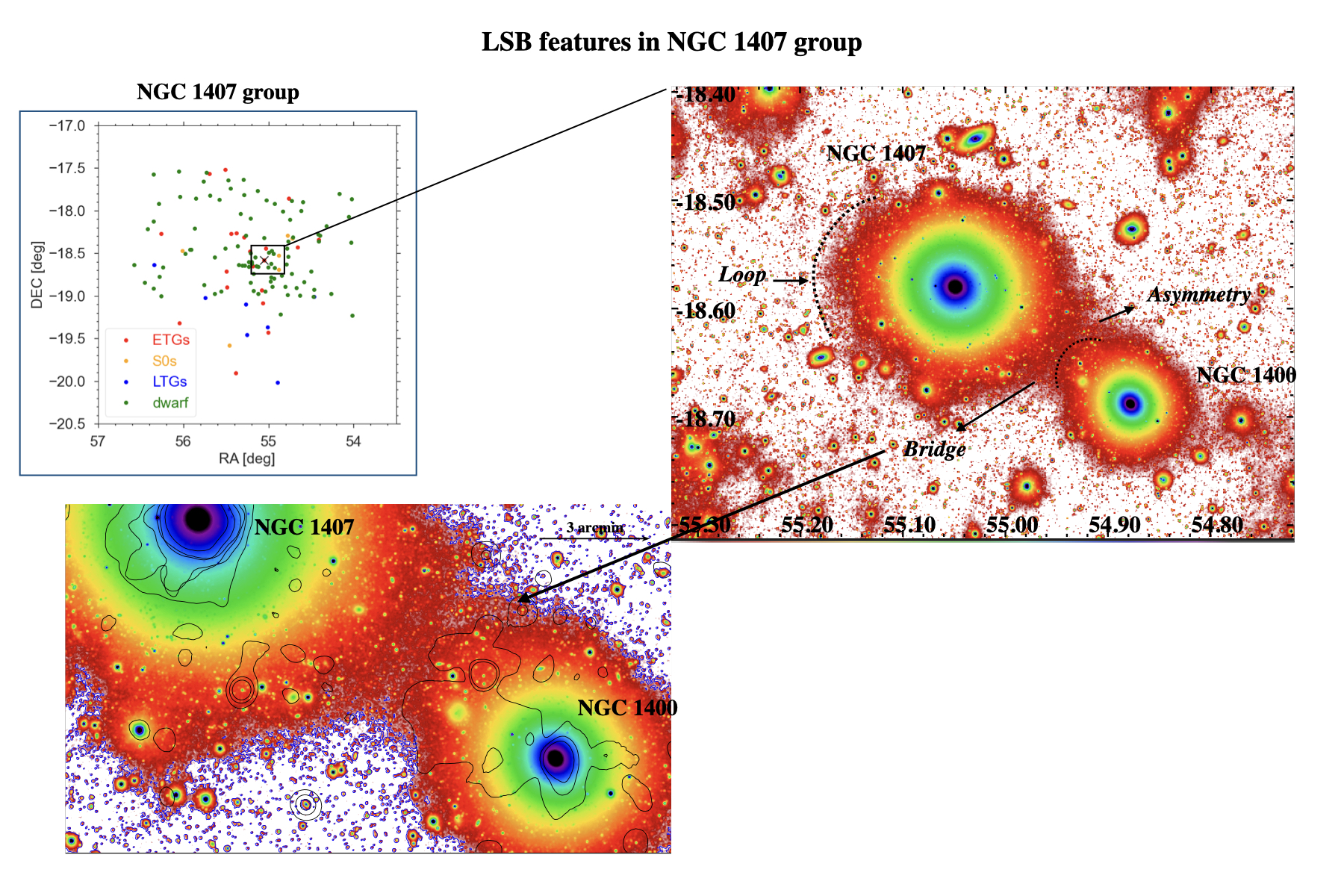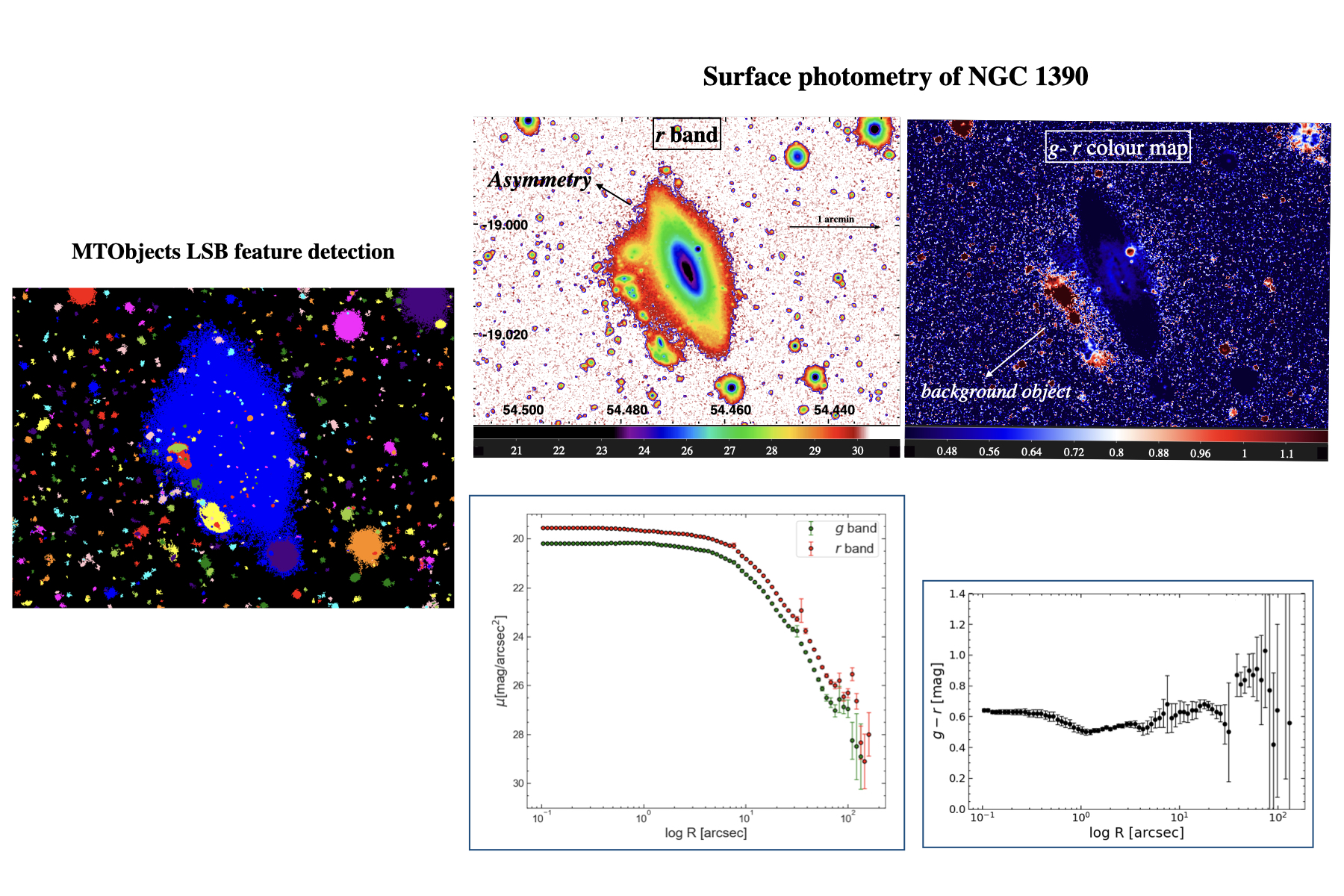
Fig. 1. Top left panel: The Fornax-Eridanus Supercluster. Black triangles represent the brightest cluster/group member; Teal dots represent LTGs mB < 16 mag (mB=16 at 20 Mpc corresponds to MB of -15.5 mag), red dots are S0 (mB < 16 mag), and peach dots are early-type galaxies (ETGs mB < 16 mag) taken from Brough et al. (2006). Teal crosses are galaxies mB < 16 mag (Ferguson 1989), purple dots are mJ < 8 mag with velocities V < 2000 km/s (2MASSX, Huchra et al. 2012). Middle panel: Eridanus supergroup with coloured squares indicating the 1x1 deg2 (FoV of OmegaCAM @VST) for observations with VEGAS. Right panel: NGC1407 group with bright and dwarf galaxies indicated.
The Fornax-Eridanus supercluster (Fig. 1: left panel) is at a distance ~ 20 Mpc, comprising several subgroups and clusters. It extends from the NGC1407 group in the north to the Dorado group in the south, and in front of the "Great Wall". The Eridanus supergroup (Fig 1.: middle panel) is the densest region in the north of the supercluster, made up of three individual groups (NGC1332, NGC1395, NGC1407) of galaxies and other neighbouring triplets or pairs of galaxies (Brough et al. 2006; Nasonova et al. 2011) which will likely merge to form a cluster with NGC1407 as its BCG (brightest cluster galaxy).
NGC1407 group
This group (Fig. 1: right panel) is centered on the elliptical galaxy NGC1407 and is the brightest (mB = 11 mag; Ferguson 1990) galaxy in the Eridanus supergroup. This group is dynamically evolved and has been a subject of interest. NGC1400 (the second brightest member in the group) and NGC1407 are located very close in projection (~ 12 arcmin) but have a large difference in velocity (Δν ∼ 1200 km/s; Su et al. 2014).
VEGAS (P.I. E. Iodice; Iodice et al. 2020a) is a deep, multi-band (u, g, r, i) imaging survey observed with the VLT Survey Telescope (VST). The survey maps the galaxy structure down the low-surface brightness (LSB) regime (μg~30mag/arcsec2) thus enabling us to study the faint features of galaxies that are prone to environmental processes. VEGAS has provided detailed studies on galaxy stellar halos, intra-cluster light, globular clusters, dwarf galaxies, and features in different environments (e.g. groups, clusters). In the context of galaxy evolution in dense environments, previous results (see Iodice et al. 2019a and references therein), provided insights into pre-processing of galaxies before cluster infall. VEGAS will observe the unexplored regions (Fig. 1.: middle panel) connecting the densest parts of the large-scale structure of the Fornax-Eridanus supercluster- in particular, the Eridanus supergroup. In this work, we present the preliminary results on NGC1407.


